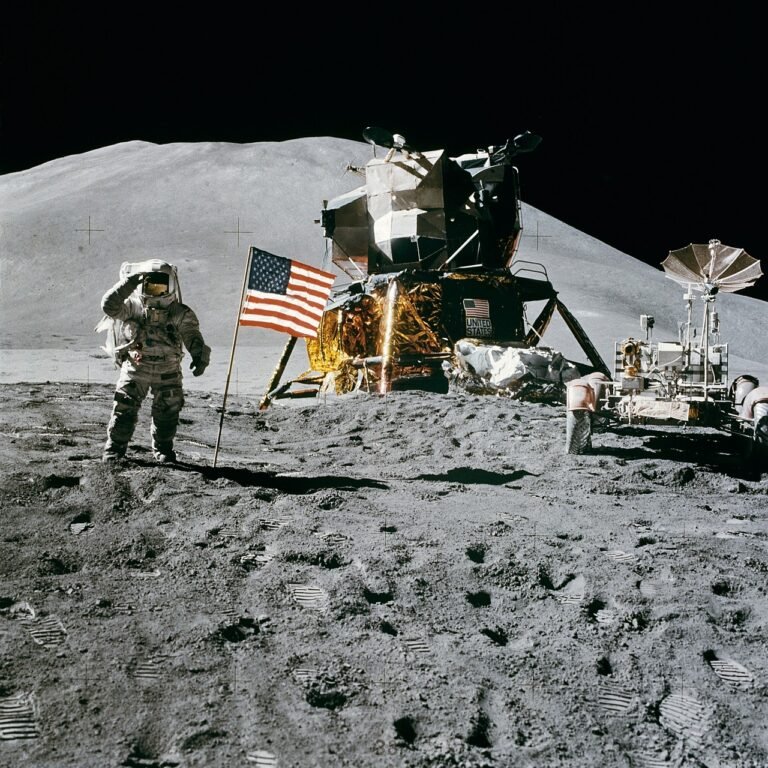In this blog we would dwell into one of the most interesting chapters of Cold War, the Space Race. The Cold War, a period of intense ideological, political, and military rivalry between the United States and the Soviet Union, transcended earthly boundaries to become a race for supremacy in the cosmos. The Space Race, a captivating and transformative chapter in history, unfolded as both superpowers sought to assert their technological and ideological dominance beyond the confines of our planet.
Table of Contents
Background
The roots of the Cold War can be traced back to the ideological differences between the United States, representing the capitalist West, and the Soviet Union, representing the communist East. The end of World War II marked the beginning of a new era of geopolitical tension, with both superpowers vying for global influence and dominance. The competition extended beyond traditional military and political arenas into the realm of science and technology, particularly space exploration.
Motivation for The Space Race
The motivations behind the space race were multifaceted, encompassing political, military, technological, and ideological considerations. Both the United States and the Soviet Union sought to demonstrate their technological prowess and scientific capabilities on the global stage, using space achievements as a means of asserting ideological superiority.
- Political and Ideological Competition: The ideological rivalry between communism and capitalism played a significant role in fueling the space race. Each side aimed to showcase the superiority of its political system through technological accomplishments. For the Soviet Union, the space race was an opportunity to demonstrate the success of communism and the effectiveness of central planning.
- Military Significance: The space race had clear military implications, as both superpowers recognized the strategic advantage of controlling space. Satellites and space-based technologies could provide valuable intelligence, communication, and surveillance capabilities. The development of intercontinental ballistic missiles (ICBMs) for space exploration also had direct military applications, contributing to the arms race between the two nations.
- Technological and Scientific Achievements: Advancements in space technology were closely linked to broader scientific and technological progress. Both the United States and the Soviet Union sought to demonstrate their scientific prowess and engineering capabilities. The successful launch of satellites and manned space missions became symbols of a nation’s technological prowess and innovation.
Key Milestones in the Space Race
The space race unfolded through a series of key milestones, with each superpower striving to outdo the other in a bid for global supremacy. The following are some of the pivotal moments that defined the space race:
- Sputnik 1 (1957): The Soviet Union took the lead in the space race by launching the world’s first artificial satellite, Sputnik 1, on October 4, 1957. This event marked a significant technological achievement and sent shockwaves through the United States, leading to increased emphasis on science and education.
- Yuri Gagarin’s Historic Flight (1961): Yuri Gagarin became the first human in space on April 12, 1961, orbiting the Earth aboard the Vostok 1 spacecraft. This achievement bolstered Soviet prestige and intensified the competition between the superpowers for manned space exploration.
- Moon Landing (1969): The United States, led by NASA, achieved a monumental milestone by landing the first humans on the moon on July 20, 1969, during the Apollo 11 mission. Neil Armstrong’s famous words, “That’s one small step for [a] man, one giant leap for mankind,” symbolized American technological prowess and marked a turning point in the space race.
- Space Shuttle Era (1981-2011): The space shuttle program, initiated by the United States with the launch of the Space Shuttle Columbia in 1981, represented a new phase in space exploration. The reusable spacecraft aimed to make space travel more cost-effective and accessible. However, the Challenger disaster in 1986 highlighted the risks and challenges associated with space exploration.

Competing Technologies and Strategies
The USSR and the USA adopted different technological approaches and strategies in their pursuit of space dominance. These approaches reflected their respective political and economic systems, as well as the resources available to them.
- Soviet Approach: The Soviet space program, under the guidance of Chief Designer Sergei Korolev, prioritized rapid development and deployment of space technology. The use of powerful rockets, such as the R-7, allowed the Soviet Union to achieve several space “firsts,” including the launch of the first artificial satellite and the first human in space. The Soviet emphasis on state centralization facilitated quick decision-making and resource allocation.
- American Approach: The United States, through NASA, adopted a more deliberate and long-term approach to space exploration. The Apollo program, culminating in the moon landing, showcased the ability of the U.S. to set and achieve ambitious goals. The space shuttle program, with its reusable spacecraft, aimed to reduce the costs of space travel and establish a sustained presence in low Earth orbit.
Impact on Science and Technology
The space race had a profound impact on the advancement of science and technology, leading to innovations that extended beyond the realm of space exploration.
- Technological Spin-Offs: The pursuit of space exploration drove the development of cutting-edge technologies with applications beyond the confines of space. Innovations such as microelectronics, satellite communication, and medical advancements found practical use in various industries, contributing to the broader technological landscape.
- Scientific Discoveries: Space missions provided unprecedented opportunities for scientific research and discovery. The study of the Earth from space, exploration of other celestial bodies, and experiments conducted in microgravity environments yielded valuable scientific insights. These discoveries not only advanced our understanding of the cosmos but also had implications for fields such as physics, astronomy, and materials science.
- International Collaboration: While the space race was a competition between the superpowers, it also laid the groundwork for international collaboration in space exploration. The Cold War-era antagonism eventually gave way to joint efforts, as evidenced by the International Space Station (ISS), a multinational project involving the United States, Russia, Europe, Japan, and Canada.
Legacy and Lessons Learned
The space race left a lasting legacy that transcends the geopolitical tensions of the Cold War. The lessons learned from this intense competition continue to shape contemporary space exploration and international relations.
- Technological Legacy: The technological legacy of the space race is evident in the modern space industry. Satellites, space probes, and advanced launch vehicles have become integral components of communication, navigation, weather monitoring, and scientific research. Private companies, spurred by the successes of the Apollo program, are now actively involved in space exploration.
- Human Space Exploration: The achievements of the space race laid the foundation for ongoing human space exploration endeavors. The ISS serves as a testament to international collaboration in space, while new initiatives, such as NASA’s Artemis program, aim to return humans to the moon and eventually send them to Mars. Human space exploration remains a frontier that captivates the imagination of nations and individuals alike.
- Diplomacy and Cooperation: The space race demonstrated the potential for diplomatic collaboration in the pursuit of common goals. Despite the intense competition between the United States and

Winner of Space race
The question of who “won” the space race between the USSR and the USA is subjective and depends on the criteria used for evaluation. Both nations achieved significant milestones, and the space race had a profound impact on science, technology, and geopolitics. However, in the popular narrative, the United States is often considered the overall winner, largely due to the success of the Apollo program and the iconic moon landing in 1969.
It is crucial to acknowledge the significant contributions of the Soviet Union, including launching the first artificial satellite (Sputnik) and sending the first human (Yuri Gagarin) into space. These achievements were groundbreaking and marked important milestones in the early stages of the space race. The competition itself led to advancements in science, technology, and international collaboration.
In the broader sense, the space race was a competition with both sides making invaluable contributions to space exploration. While the U.S. is often considered the winner, it’s essential to recognize that the enduring legacy of the space race extends beyond national boundaries, contributing to the collective progress of humanity in the exploration of space.
Conclusion
the Cold War space race between the USSR and the USA stands as a remarkable chapter in human history, marked by intense rivalry, unparalleled achievements, and enduring legacies. Motivated by political, ideological, and military considerations, both superpowers engaged in a relentless pursuit of technological supremacy, culminating in groundbreaking milestones that captivated the world’s attention.
The Soviet Union’s early successes, epitomized by Sputnik and Yuri Gagarin’s historic flight, were met with the United States’ triumphant moon landing, symbolizing American technological prowess. The competition spurred technological innovations, scientific discoveries, and international collaboration, leaving an indelible impact on the global space exploration landscape.

